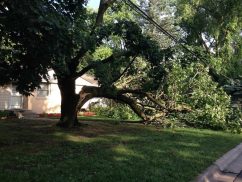
Buying Homeowners Association Insurance is an important decision the board has to take because of the role it plays in risk management. There are various important steps the board has to follow.
Step 1 -Early Preparation: It is important to begin early, at least 90 to 120 days prior to the renewal date. Start by getting the loss histories of all insurance carriers who have provided coverage for the Homeowners Association for the past three to five years
Step 2 – Check Accuracy of Loss History: There are so many ways the loss history can be inaccurate. For example; the loss can be attributed to a different insured, or it could continue to appear on the loss history even though the insurance carrier has successfully commutated it. It is very necessary to take note of these inaccuraciesStep 3 – Assemble a Complete Bid Package: The bid package allows insurance carriers to give premium quotations based on the bid package to your Homeowners Association Insurance Agent. It makes the evaluation process easier. The bid package must include some of the following:
- A brief description of the property with an overview of its amenities (pools, gym etc.), the year it was built, the number of units and any structural improvements.
- Current three-year loss history
- Copies of the governing documents
- Copy of the site plan
- Copies of the Home Owners Association’s most current financial statement and budget
- Current appraisal (if available)
Step 4 – Assign the Markets: if you are using more than one agent, you’ll have to assign which one access the market on your behalf because a Homeowners Association Insurance Carrier will only release a premium quote to one agent.
Step 5 – Evaluate the Insurers: In evaluating the insurers, the board should consider the carrier’s experience with HOAs. They should also consider the financial stability of the carrier using third-party rating (A.M best, Fitch Ratings, Moody’s Ratings and Standard or Poor’s rating).
Step 6 – Is the Agent Qualified?: Before hiring an agent, there are some very important factors to consider by which should make him qualified/fit. Firstly, the agent’s professional certificates should include; CPCU (Chartered Property and Casualty Underwriter), CIC (Certified Insurance Counselor), CIRMS (Community Insurance and Risk Management Specialist) and ARM (Associate in Risk Management). Secondly, consider his years of experience and his involvement in the industry trade organization.
Step 7 – Presentation: The agent is required to provide a visual representation showing a comparison of the coverages and benefits being offered by the various companies offering a proposal. This visual representation (most likely a spreadsheet) should show the merits and deficiencies provided by one proposal over the other.
Step 8 – Price Consideration: The price is considered last so as to ensure that no stone is left unturned. This is done to ensure that you are getting the best coverage at the least possible premium.



















